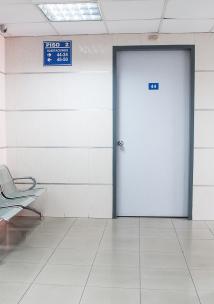GP Experiences: How supportive are waiting rooms for people with mental health concerns?

Summary
The waiting room is also an important point of communication between the surgery and the patient. Many spend their time there reading leaflets or posters, and it is an opportunity to convey important health related messages. The display of health information conveys explicit information through posters and leaflets as well as implicitly implies which topics are open for discussion. An absence of information about mental health could discourage patients from speaking about any symptoms they may have, or feel unsure that the GP is the right person to speak to. we set out to visit all 48 of Lambeth’s GP surgery waiting rooms. Those who have come in for an emergency appointment may spend long periods of time waiting to see a GP, sometimes in severe distress. The environment, from lighting to the seating arrangements, can significantly affect their ability to sit comfortably as well as their mood and willingness to speak openly.
Key findings
-
Across the 47 GP surgeries we visited, we found 81 different mental health materials, ranging from leaflets for veterans with mental health problems to an on-screen video about Mind’s national ‘Find the words’ campaign
-
In nearly a third of the GP waiting rooms, mental health material was judged by our team members as having low visibility or accessibility. In most waiting rooms there appeared to be little order or organisation to displays, with mental health material often mixed in with physical.
-
some waiting rooms felt more suitable and welcoming for those in distress than others. The atmosphere of waiting rooms was thought to be affected by numerous factors, which contributed to how warm, calm and safe waiting rooms felt.
Overall, the presence of mental health material and the atmosphere of the 47 Lambeth GP waiting rooms were significantly different. In a few waiting rooms, there were good displays of material which had been well thought through in terms of its inclusion and layout. However, our sense in most surgeries was that there was less strategic decision making as to what material would be useful for patients. We expected to consistently find information about mental health crisis lines and local services but this was infrequently the case. Typically, the leaflets and posters we found appeared to be included as if by chance, without any rationale behind their presence. The disorder of most waiting room displays tended to undermine their capacity to be useful or for individuals to identify information which might be relevant for them.
Downloads
If you need this report in a different format, please contact us
info@healthwatchlambeth.org.uk
020 7274 8522

